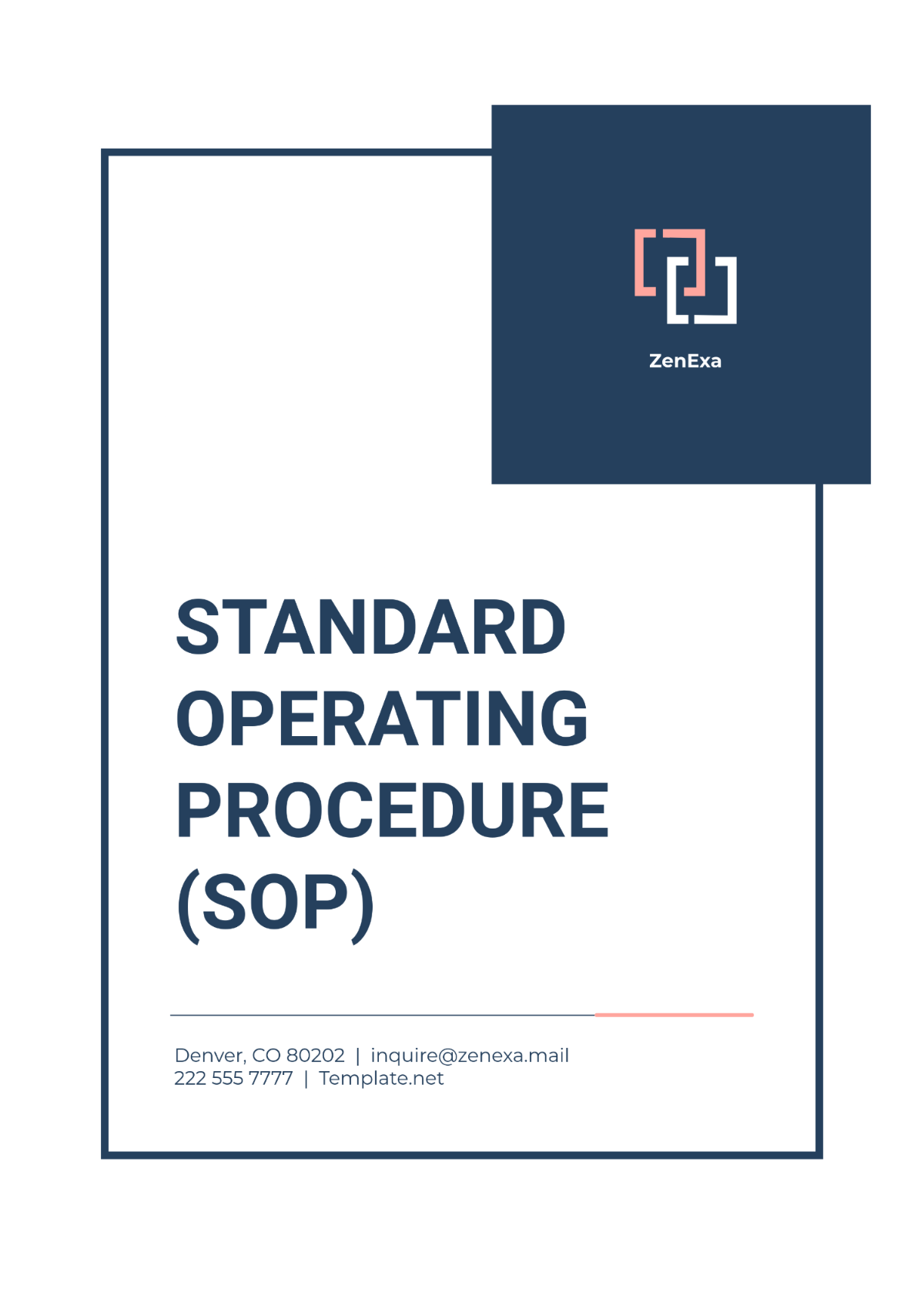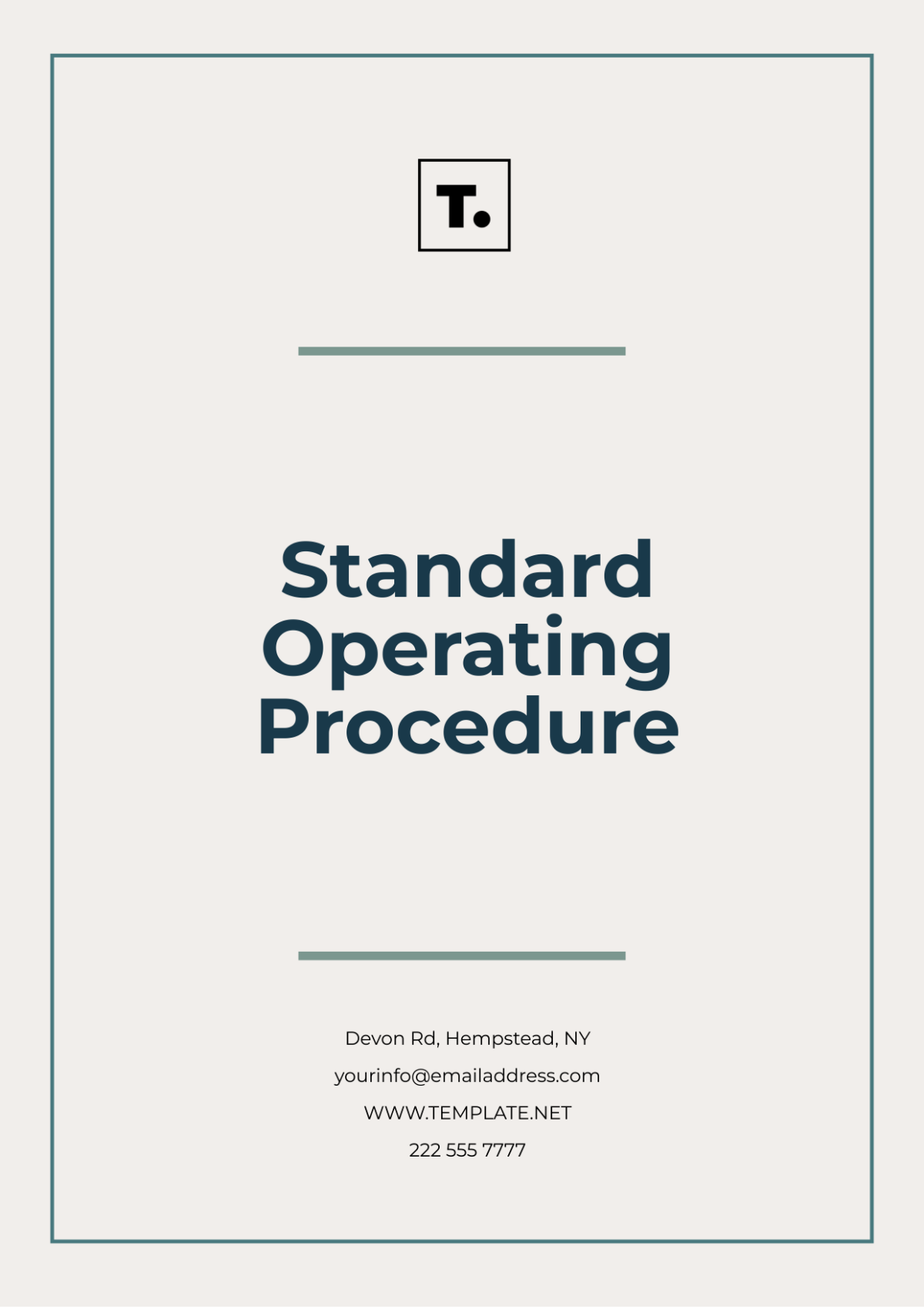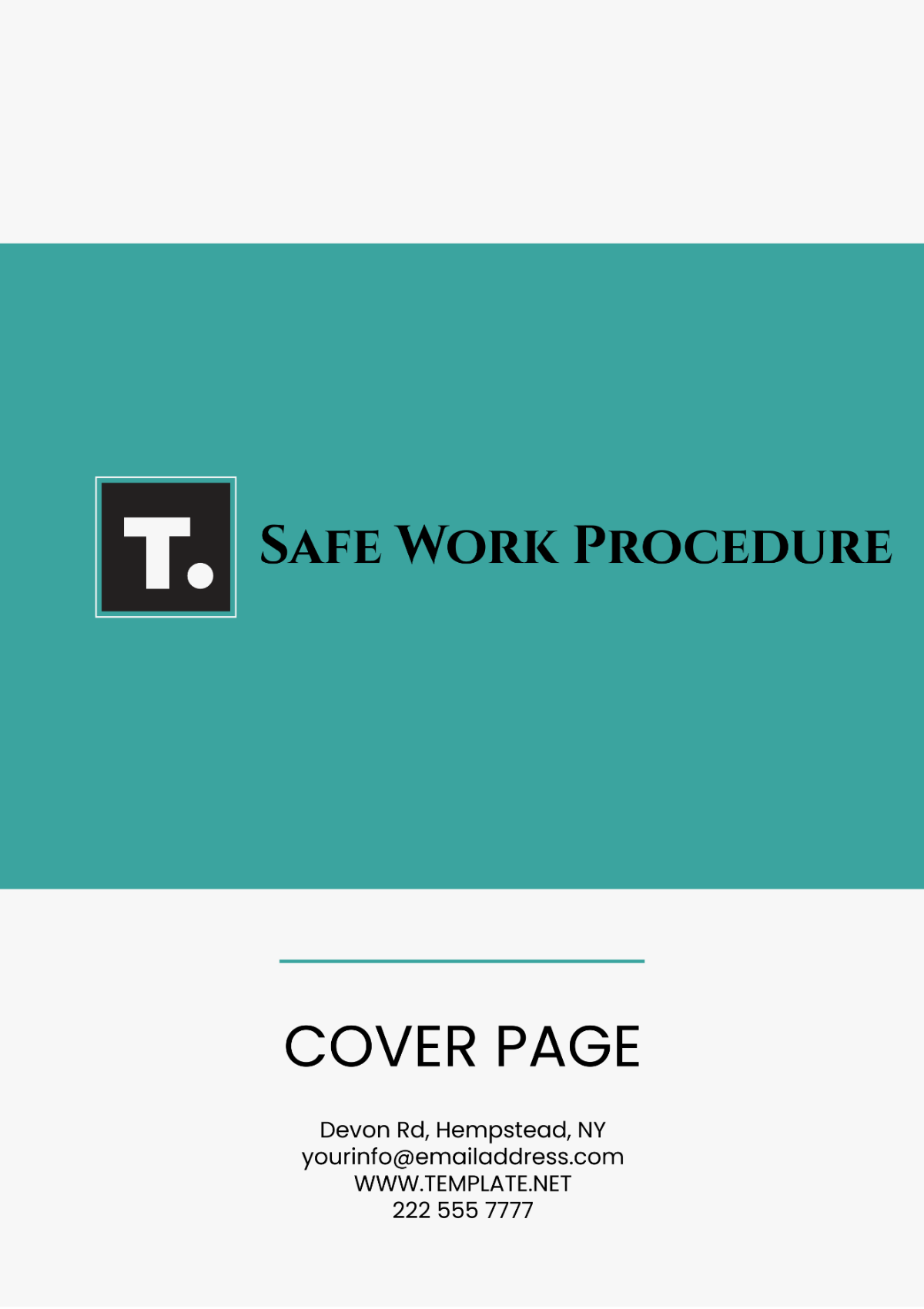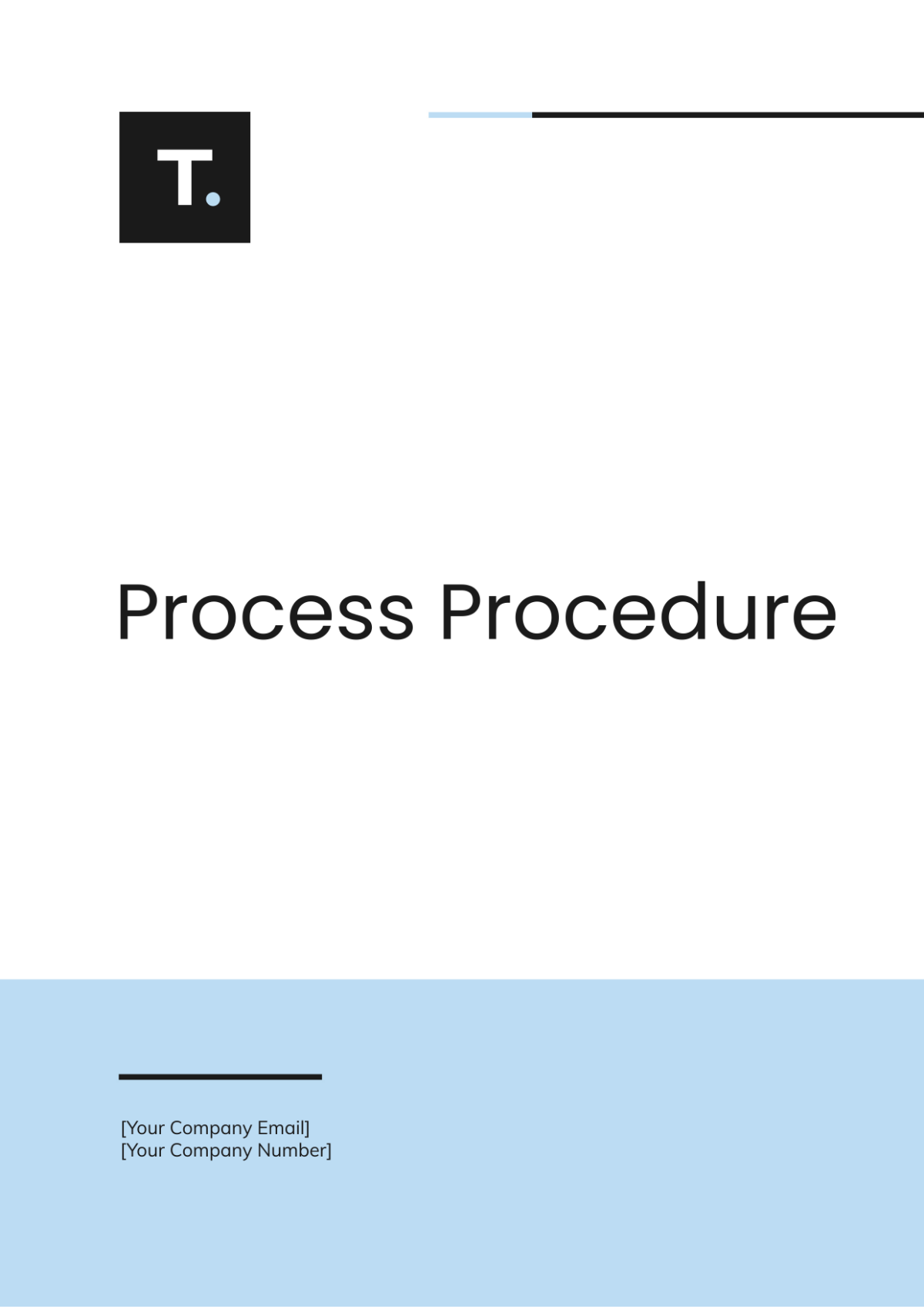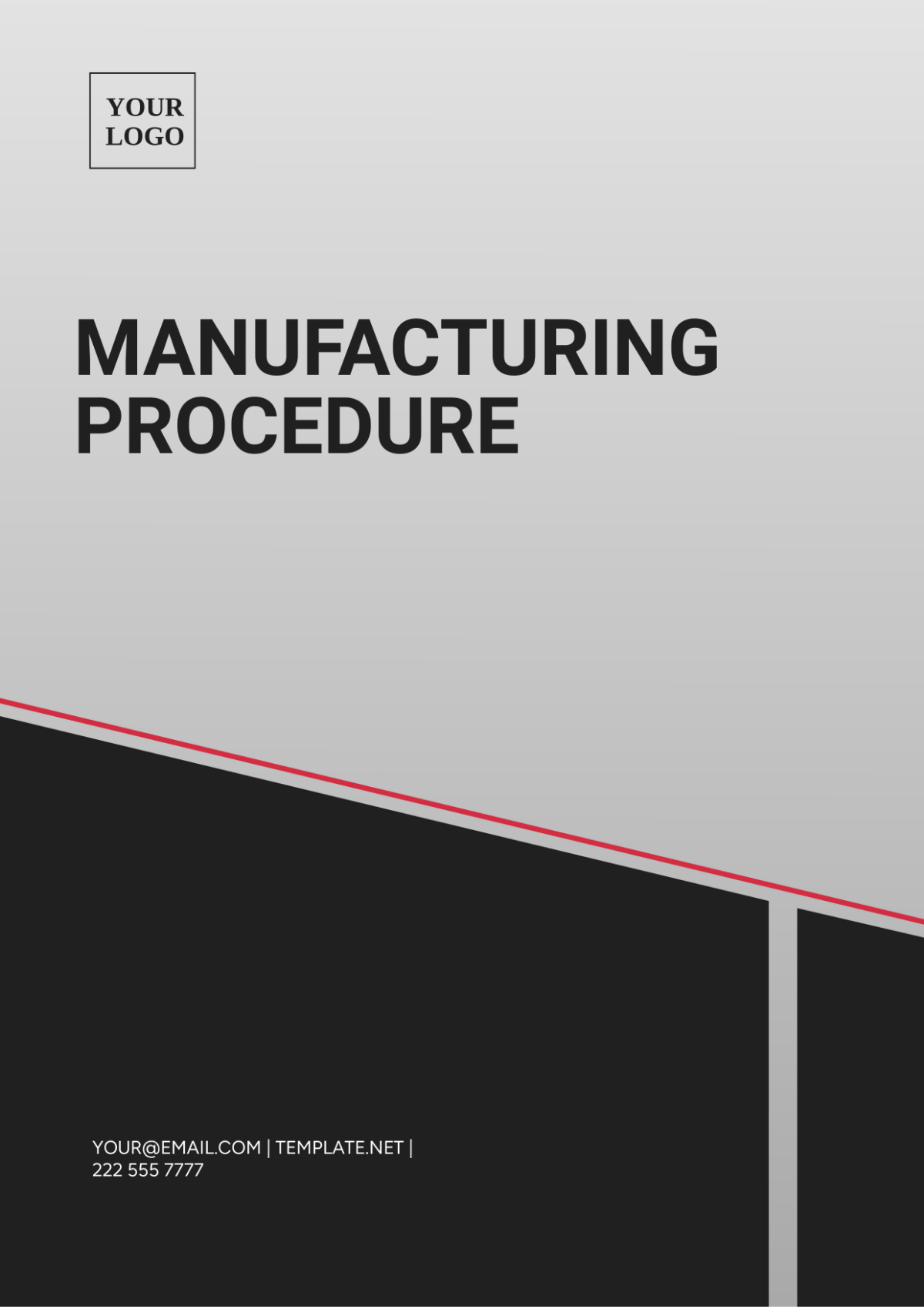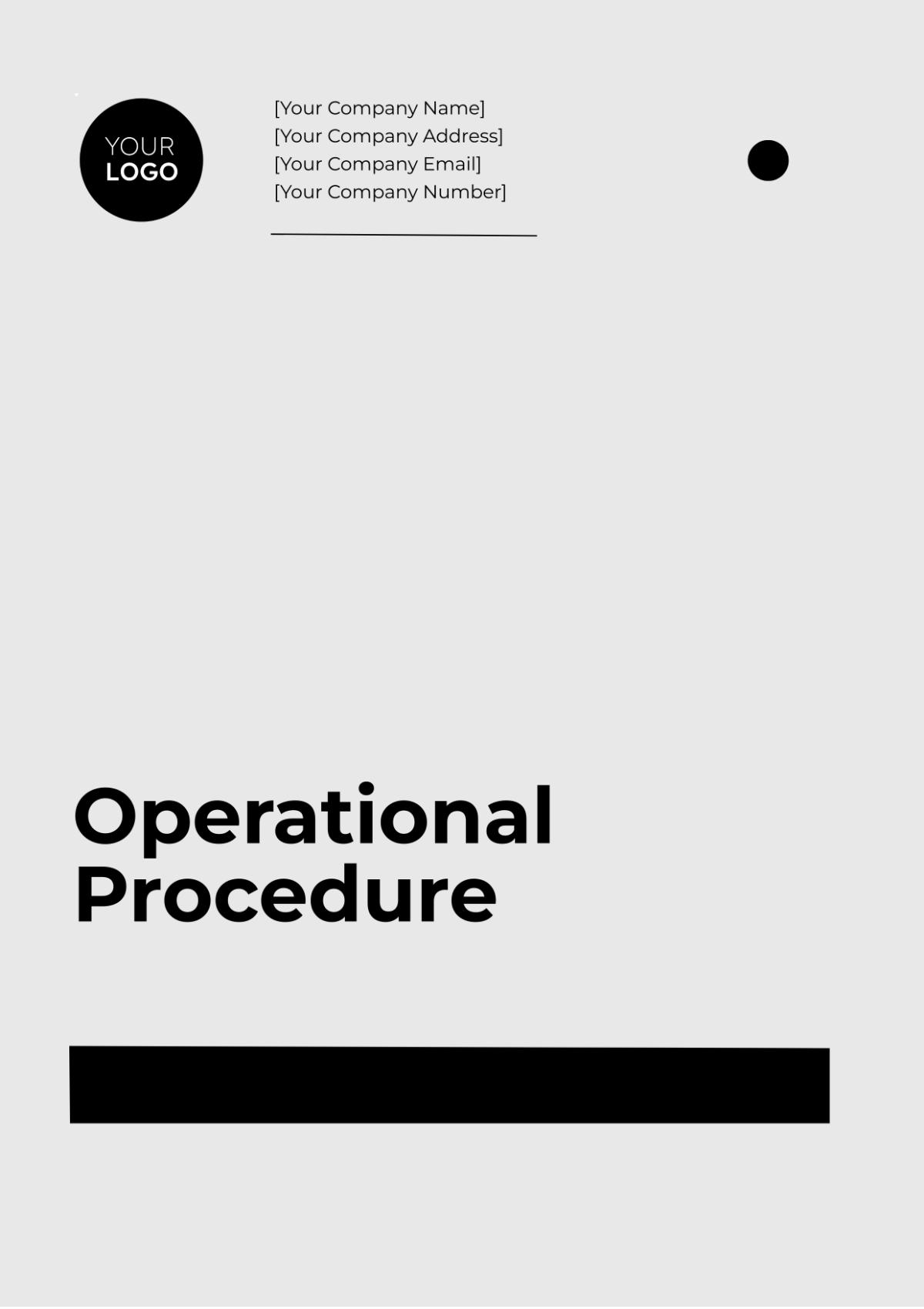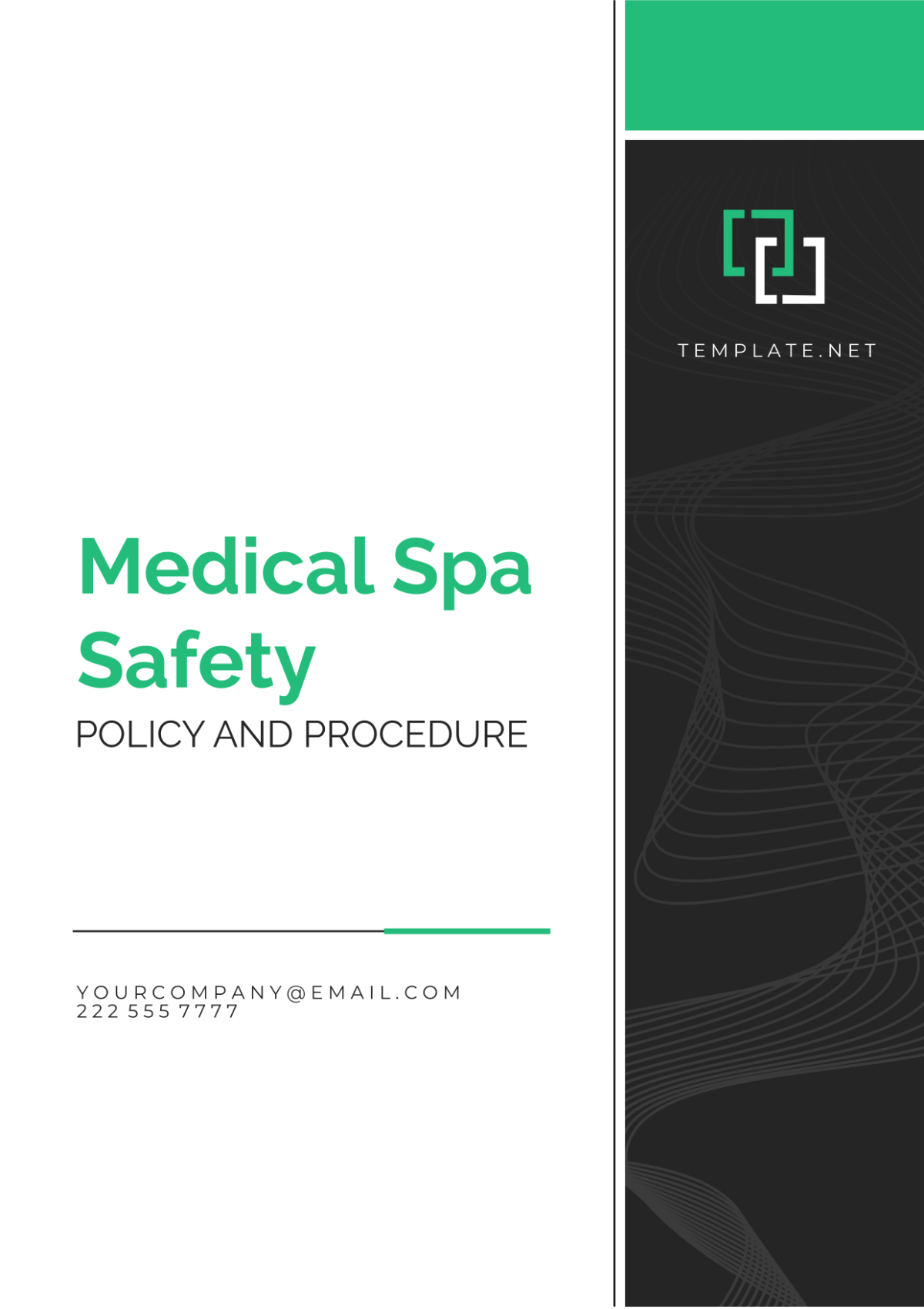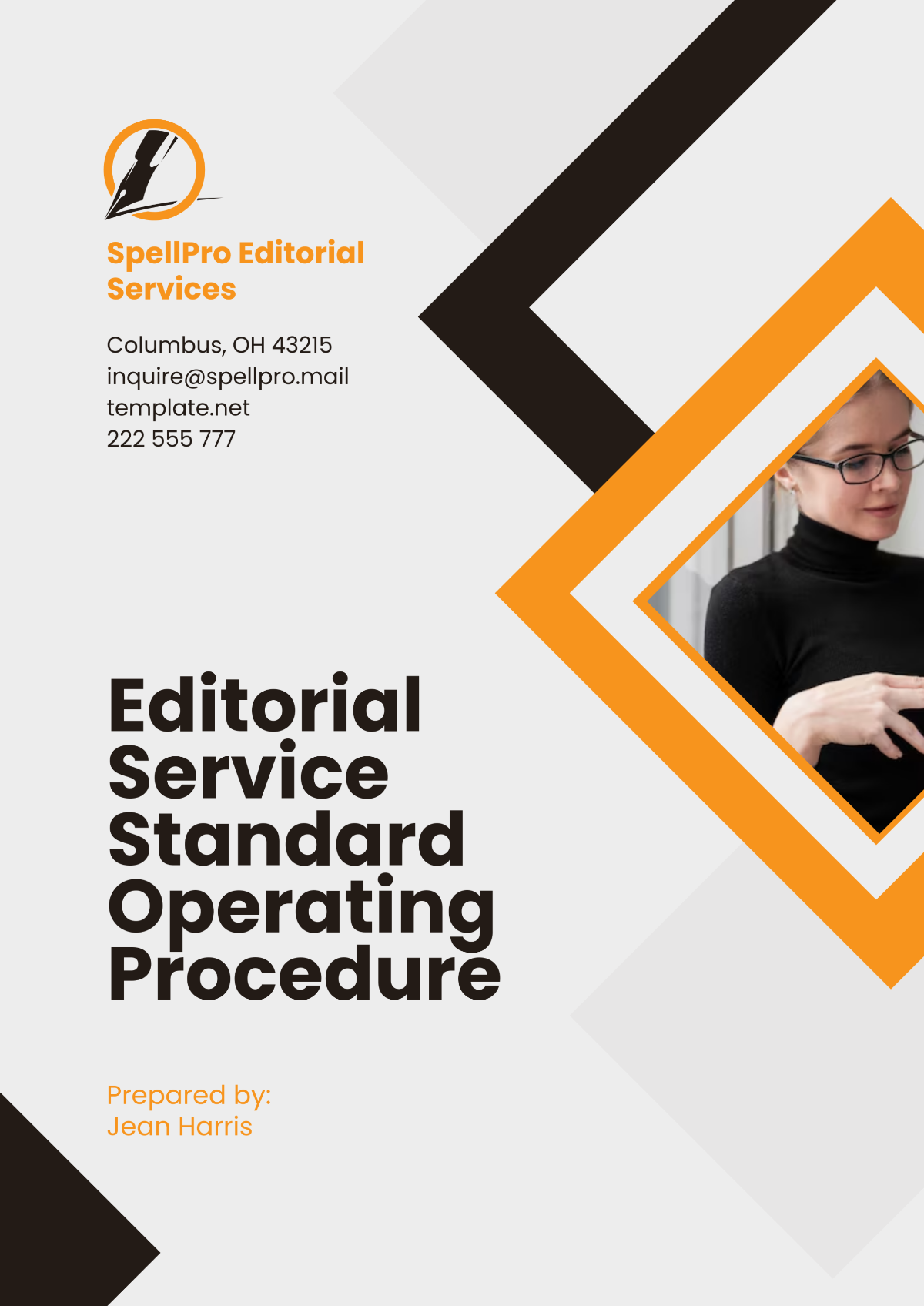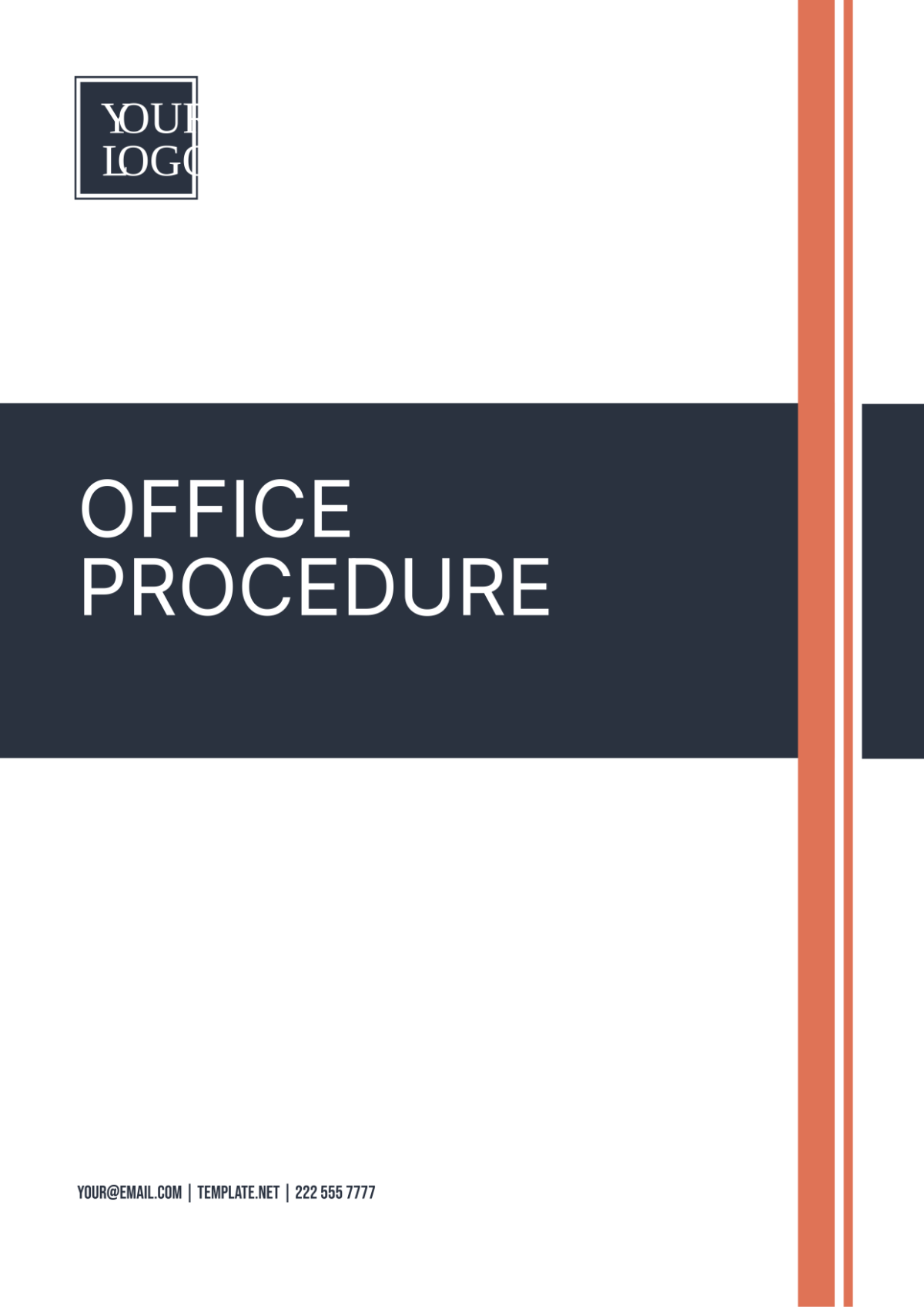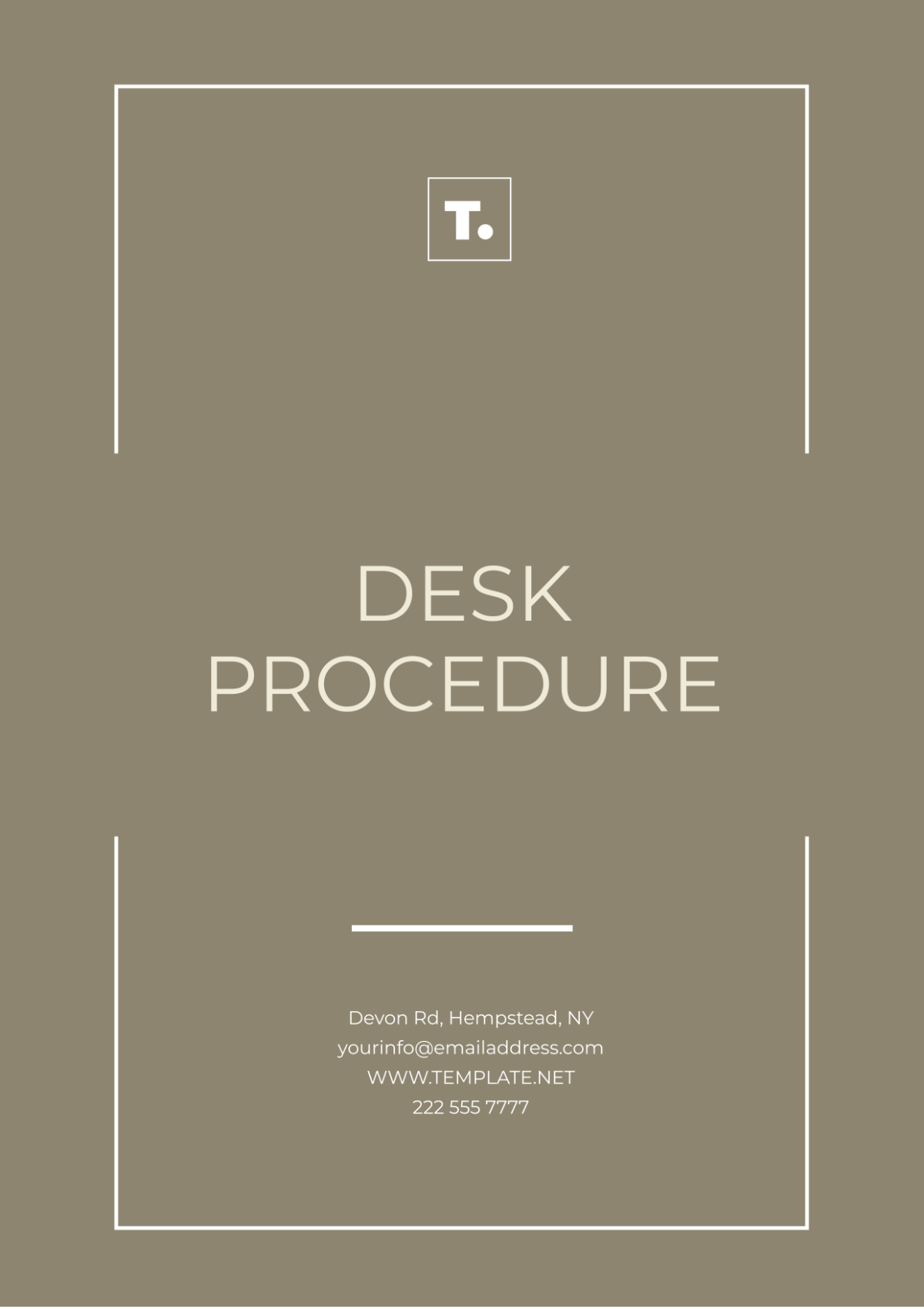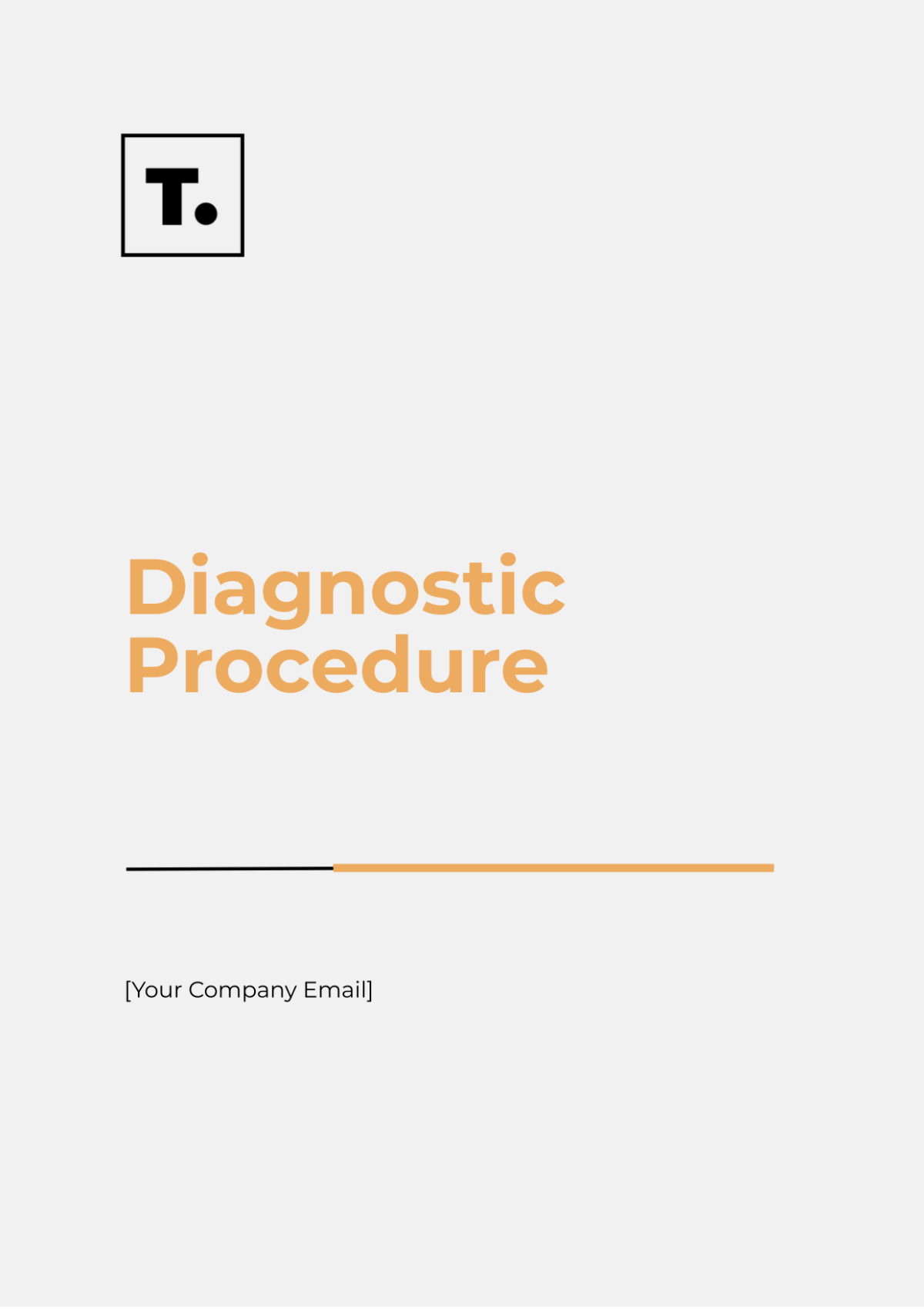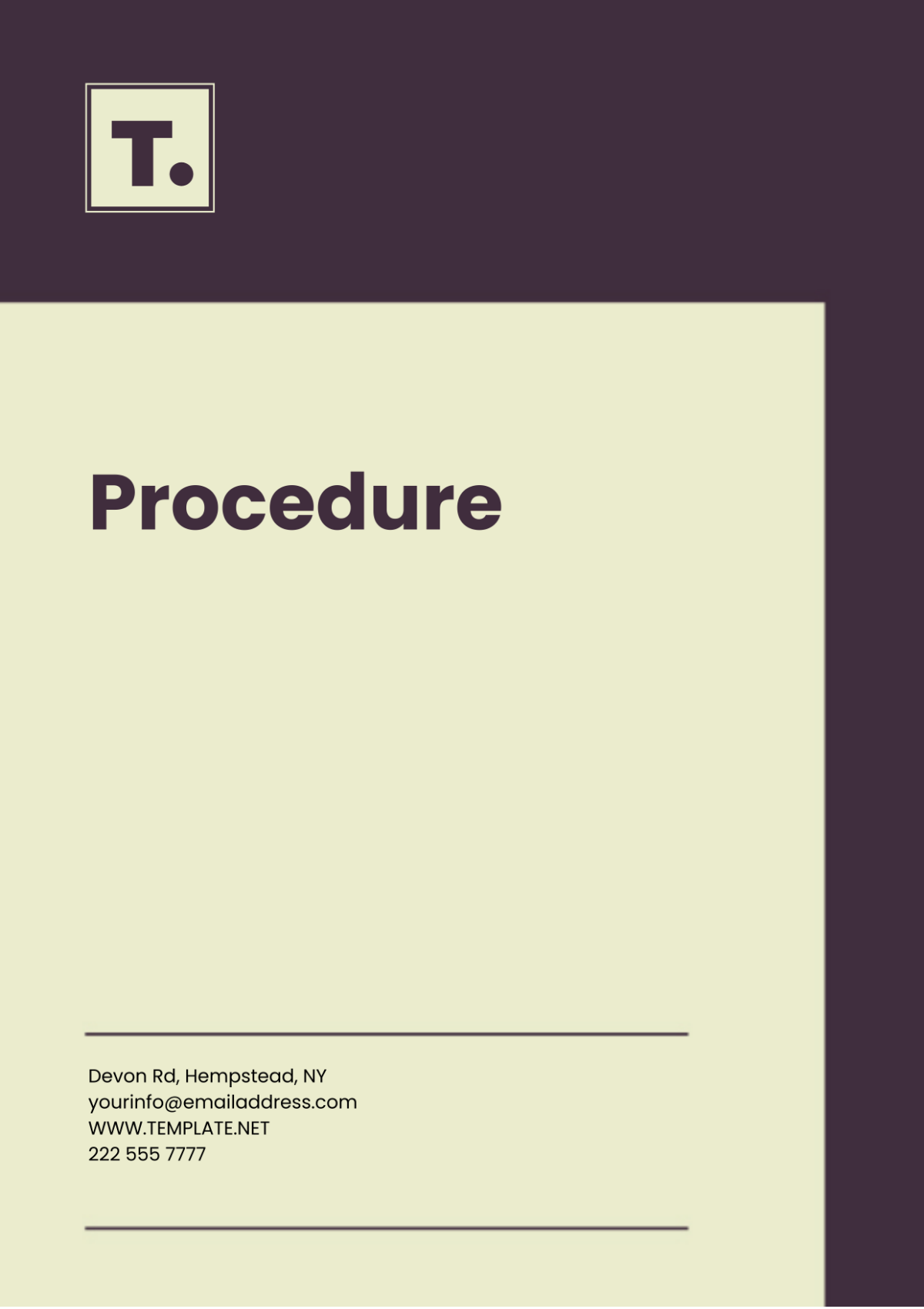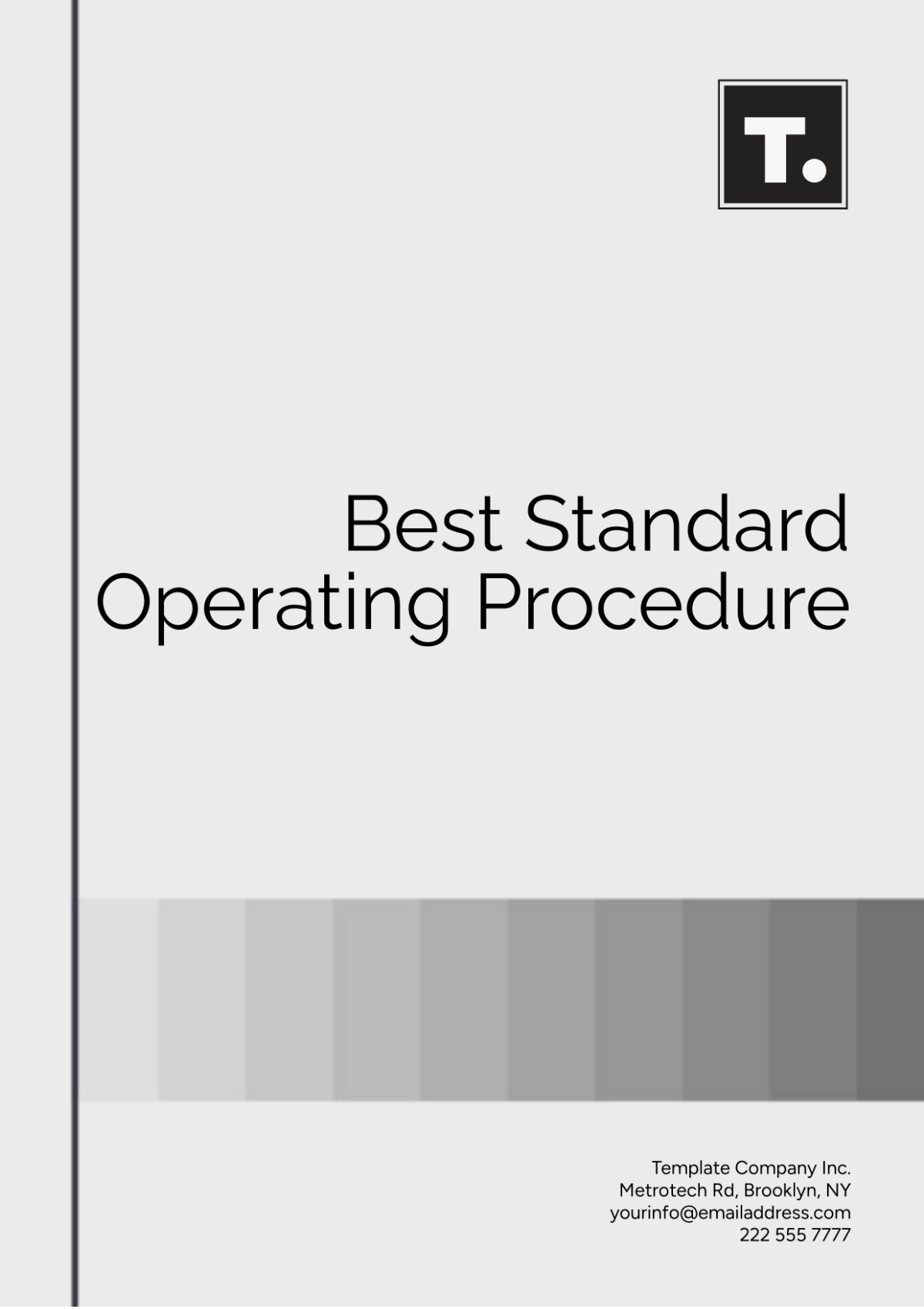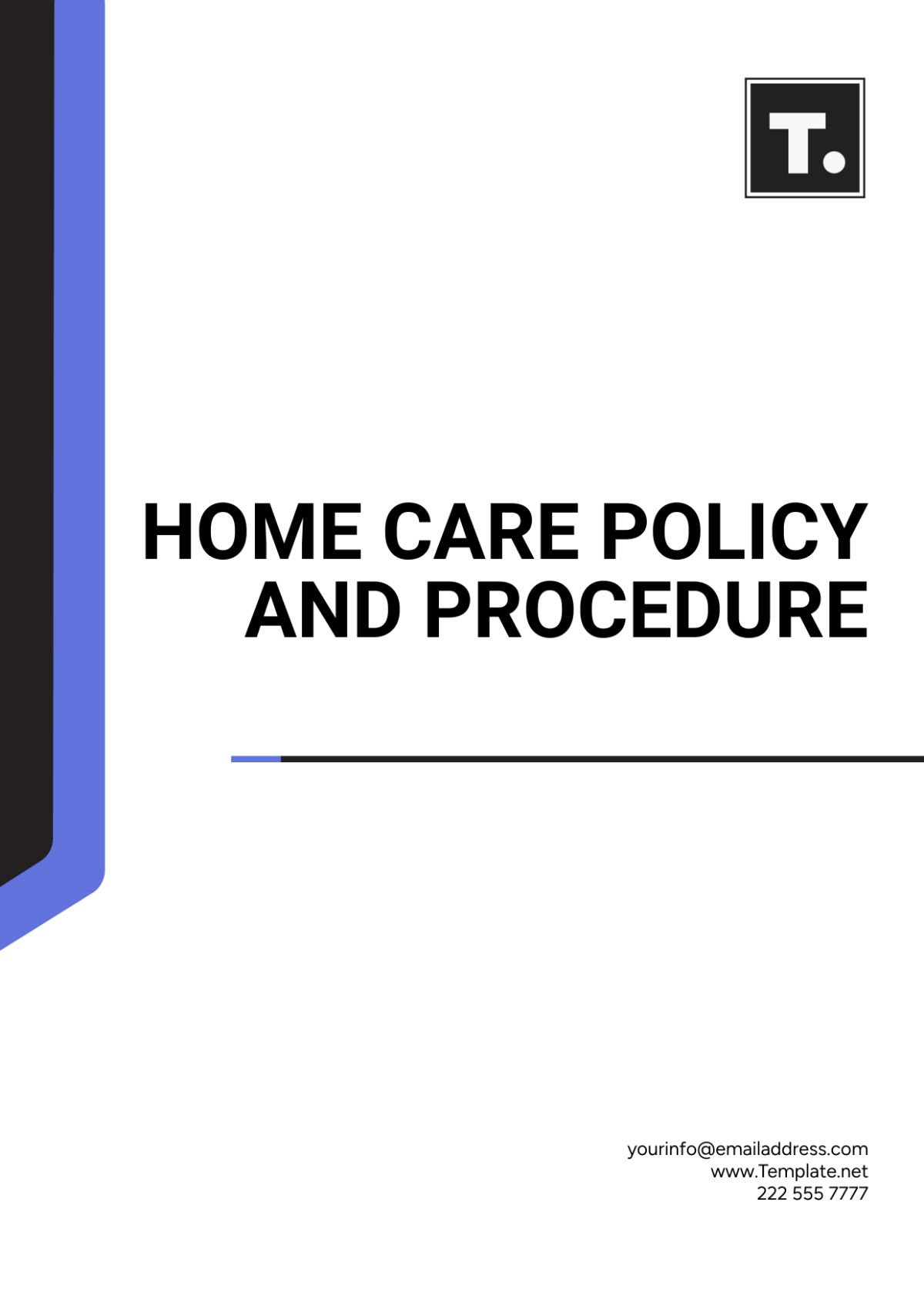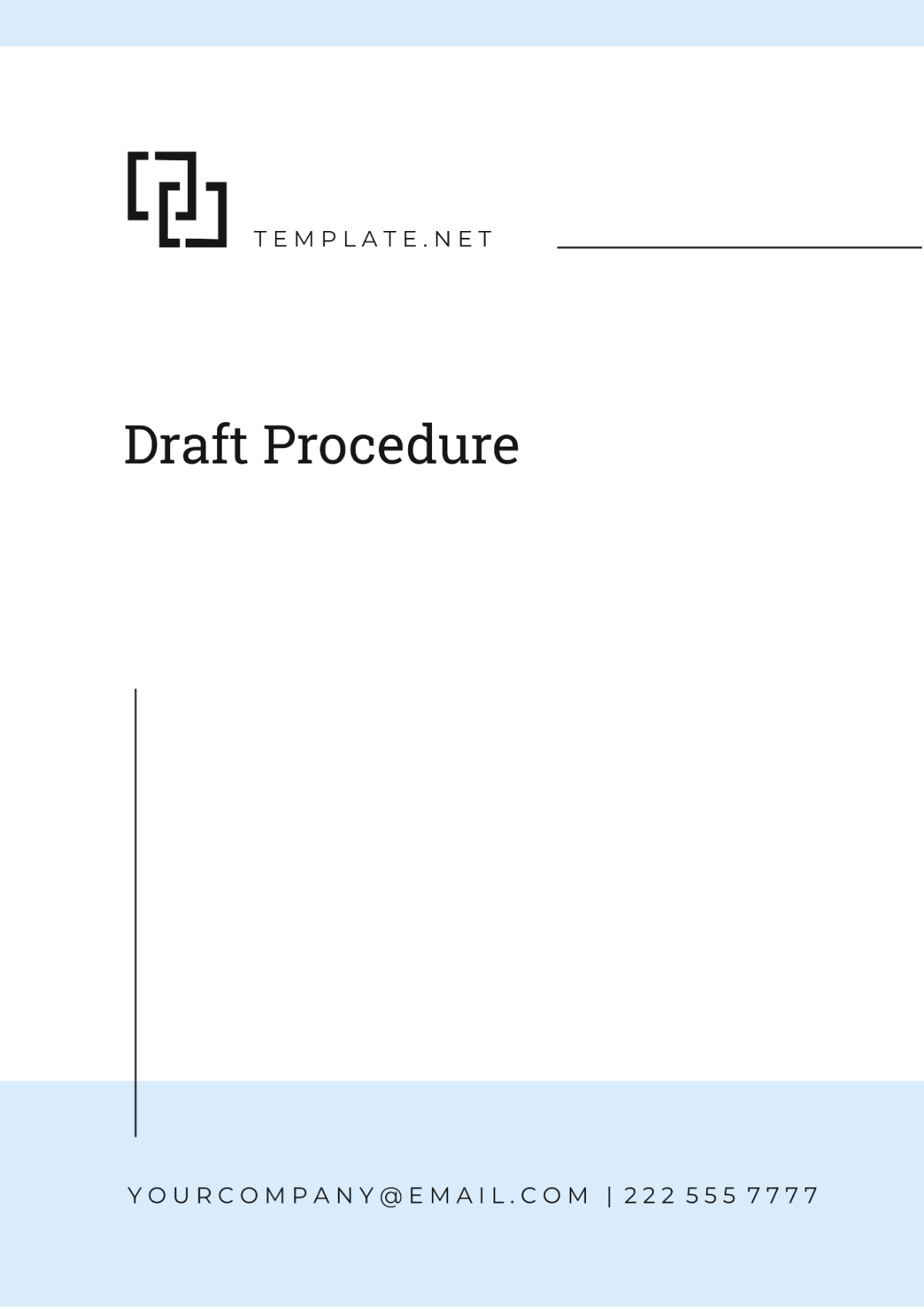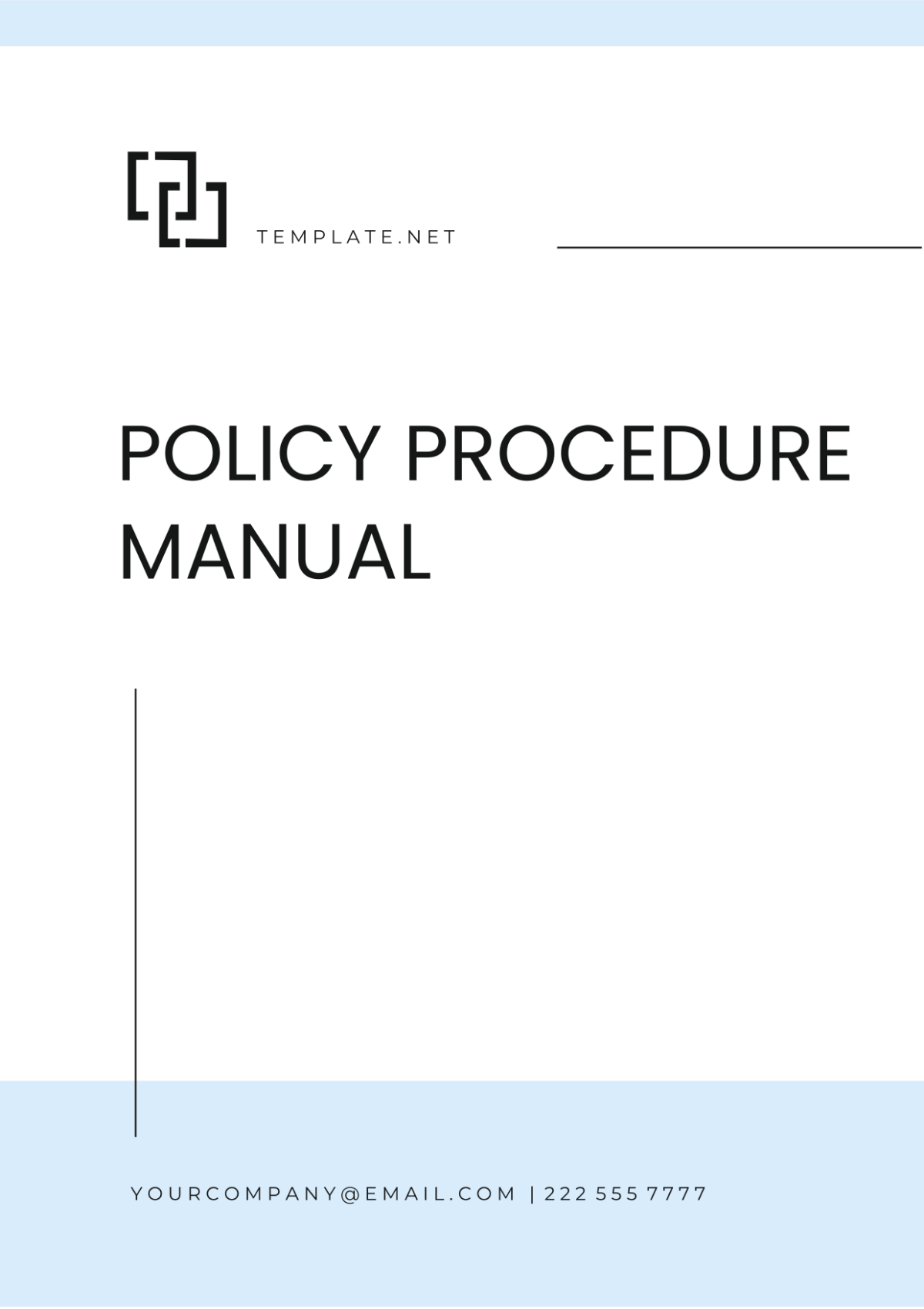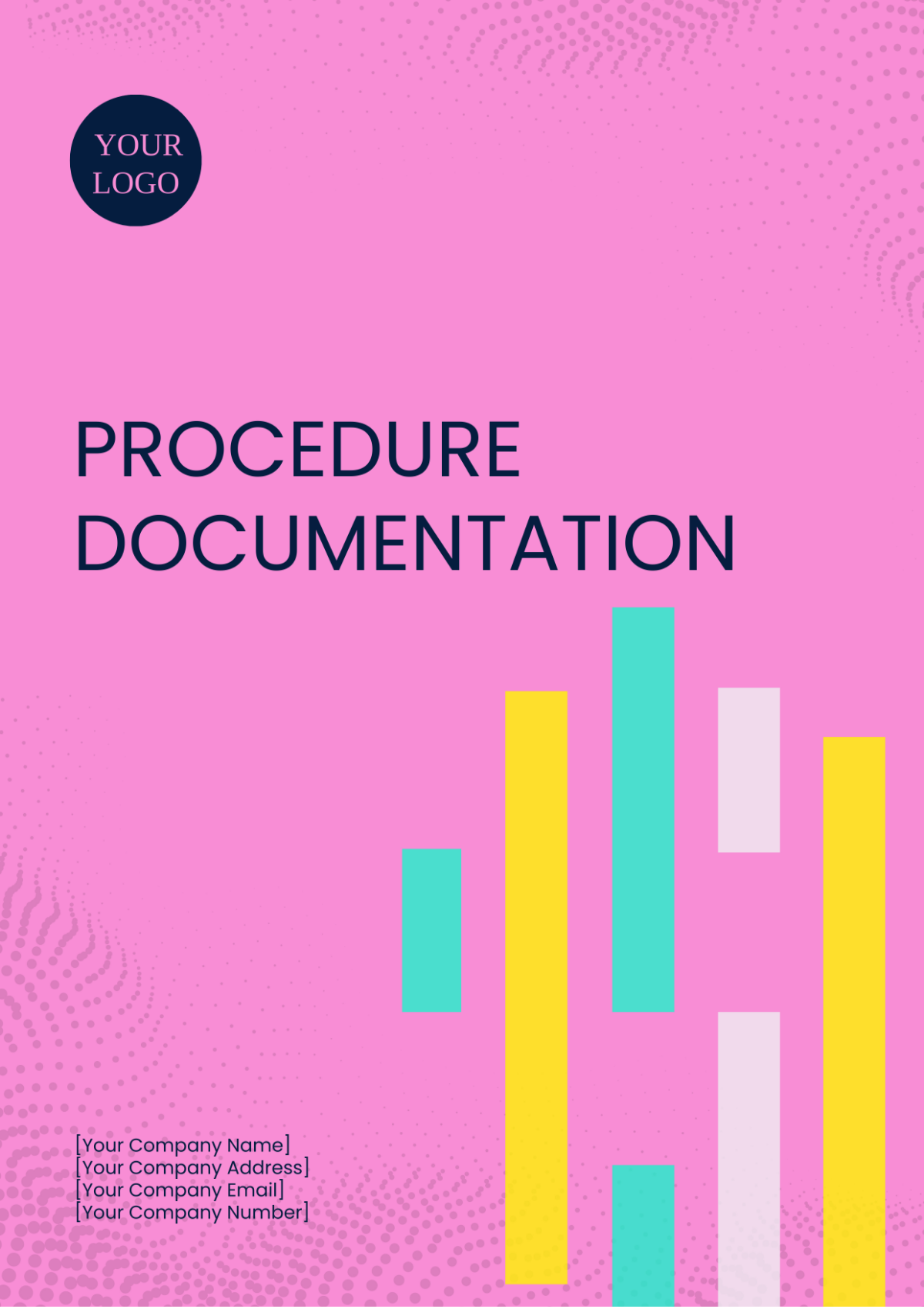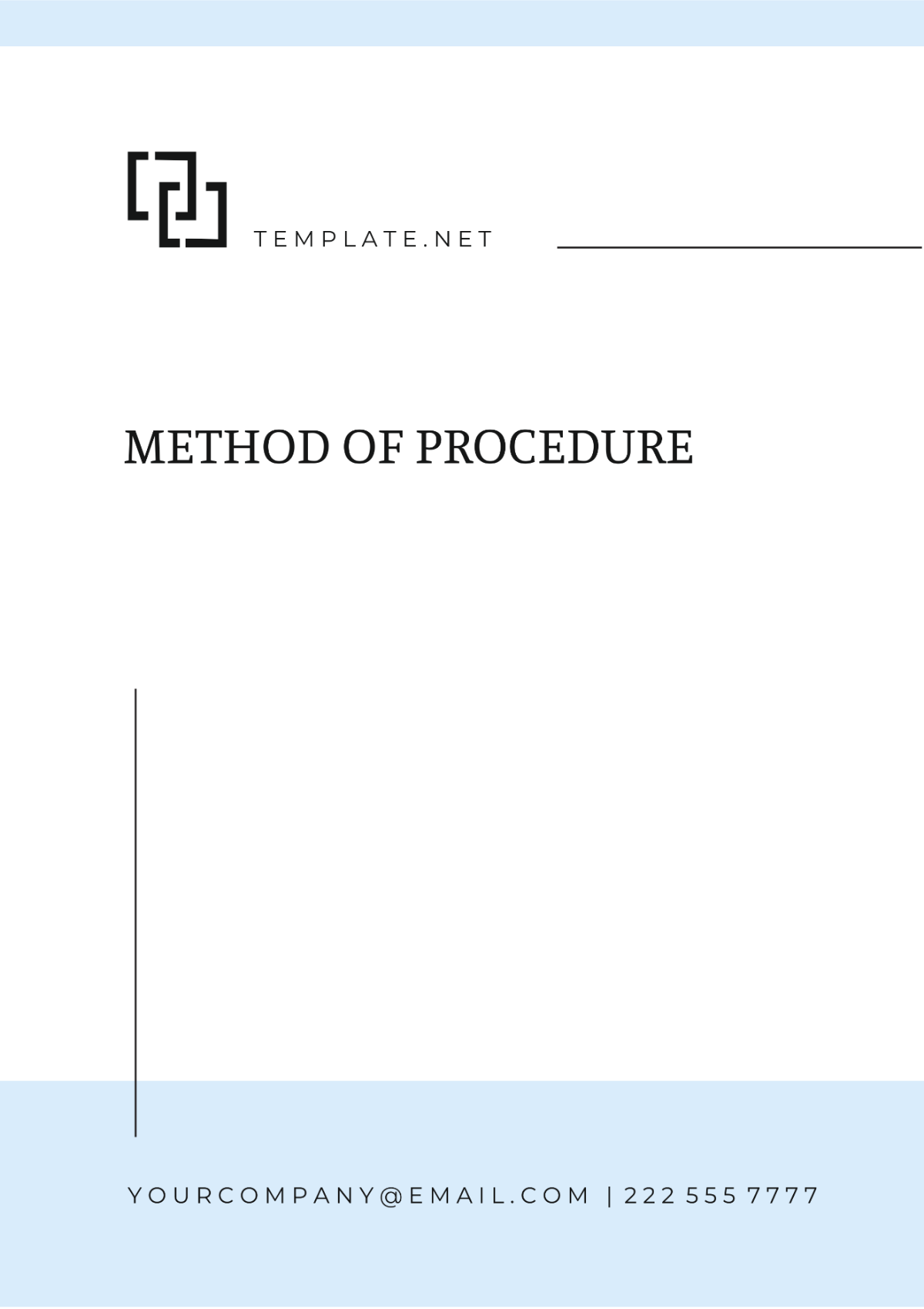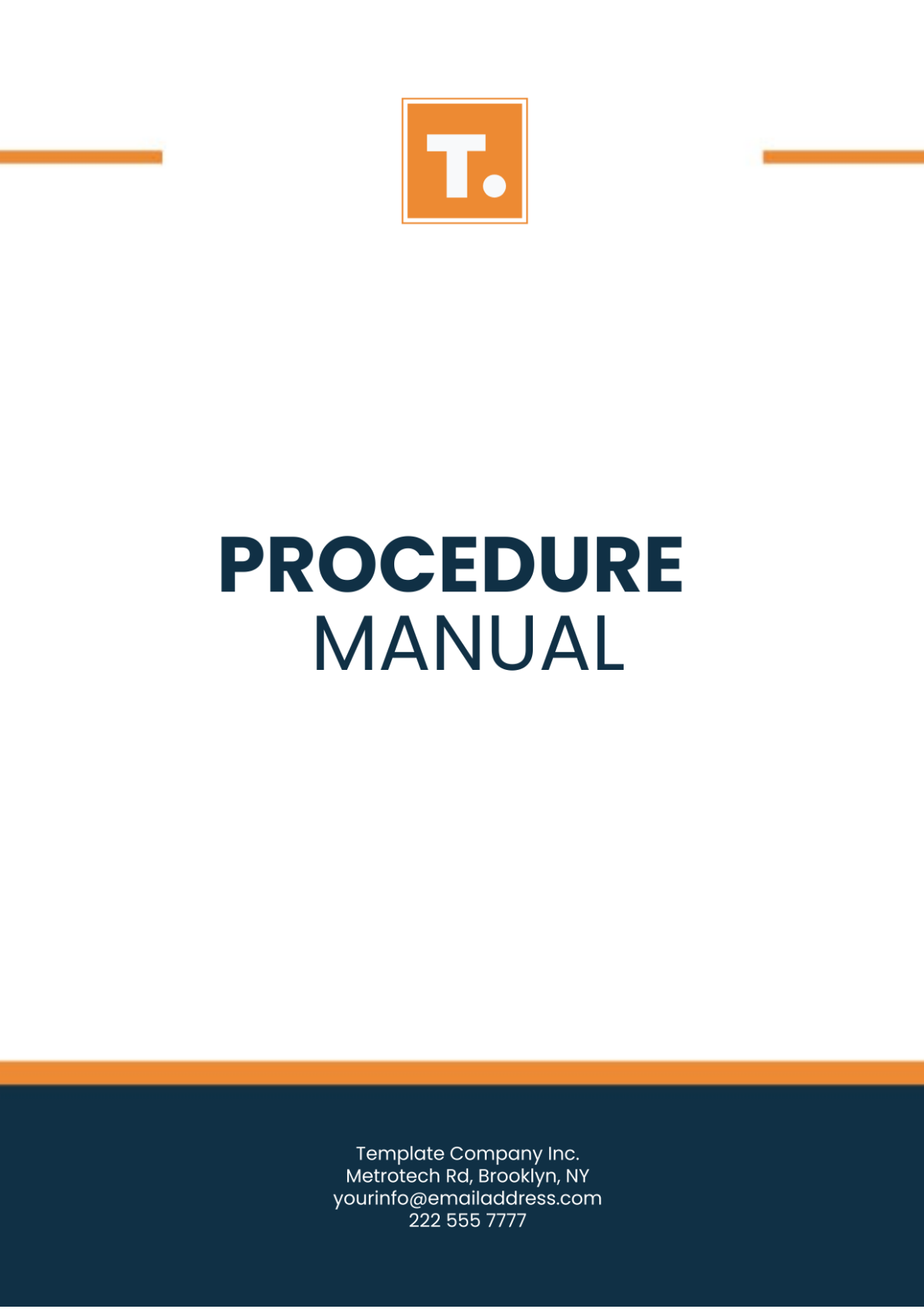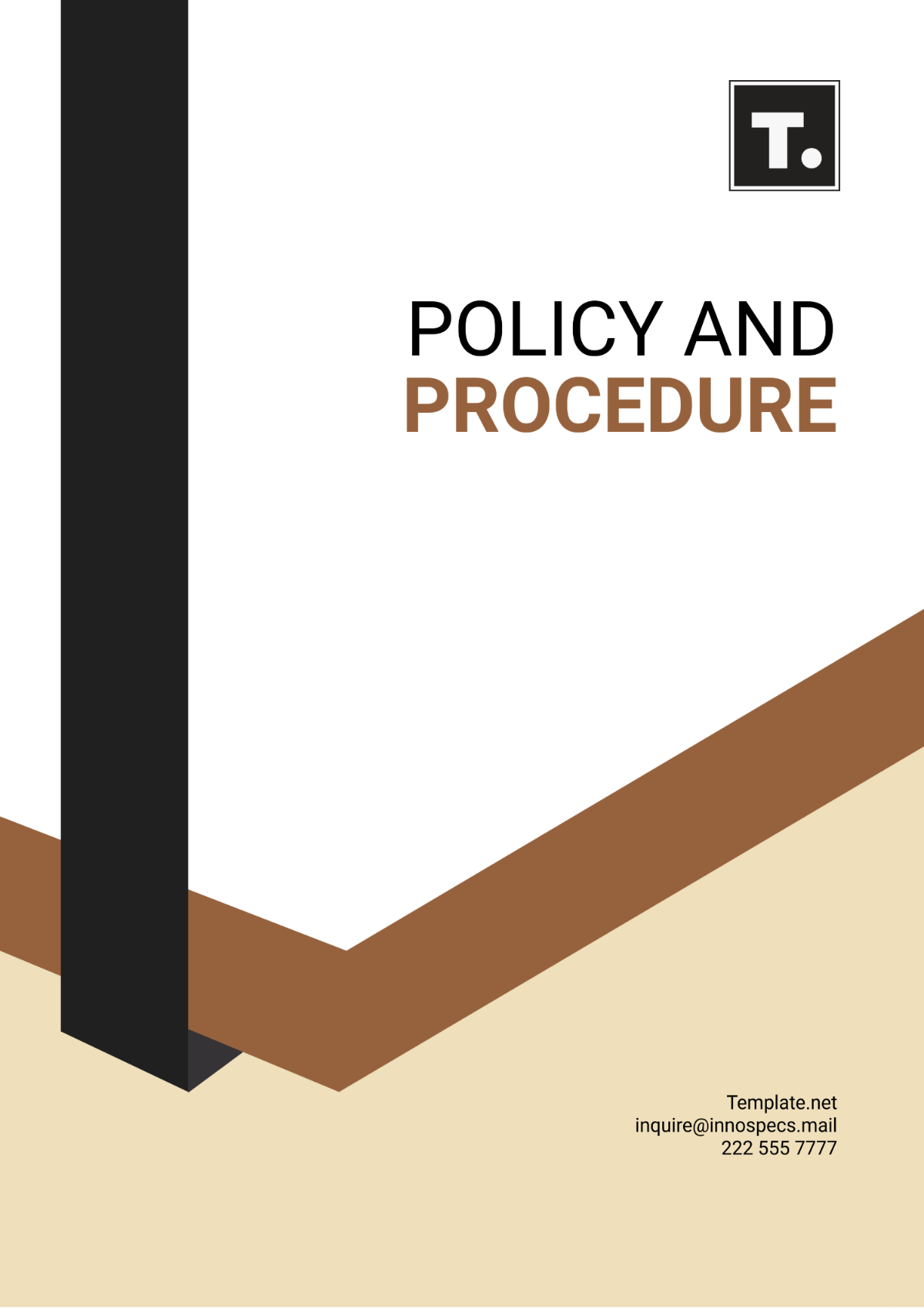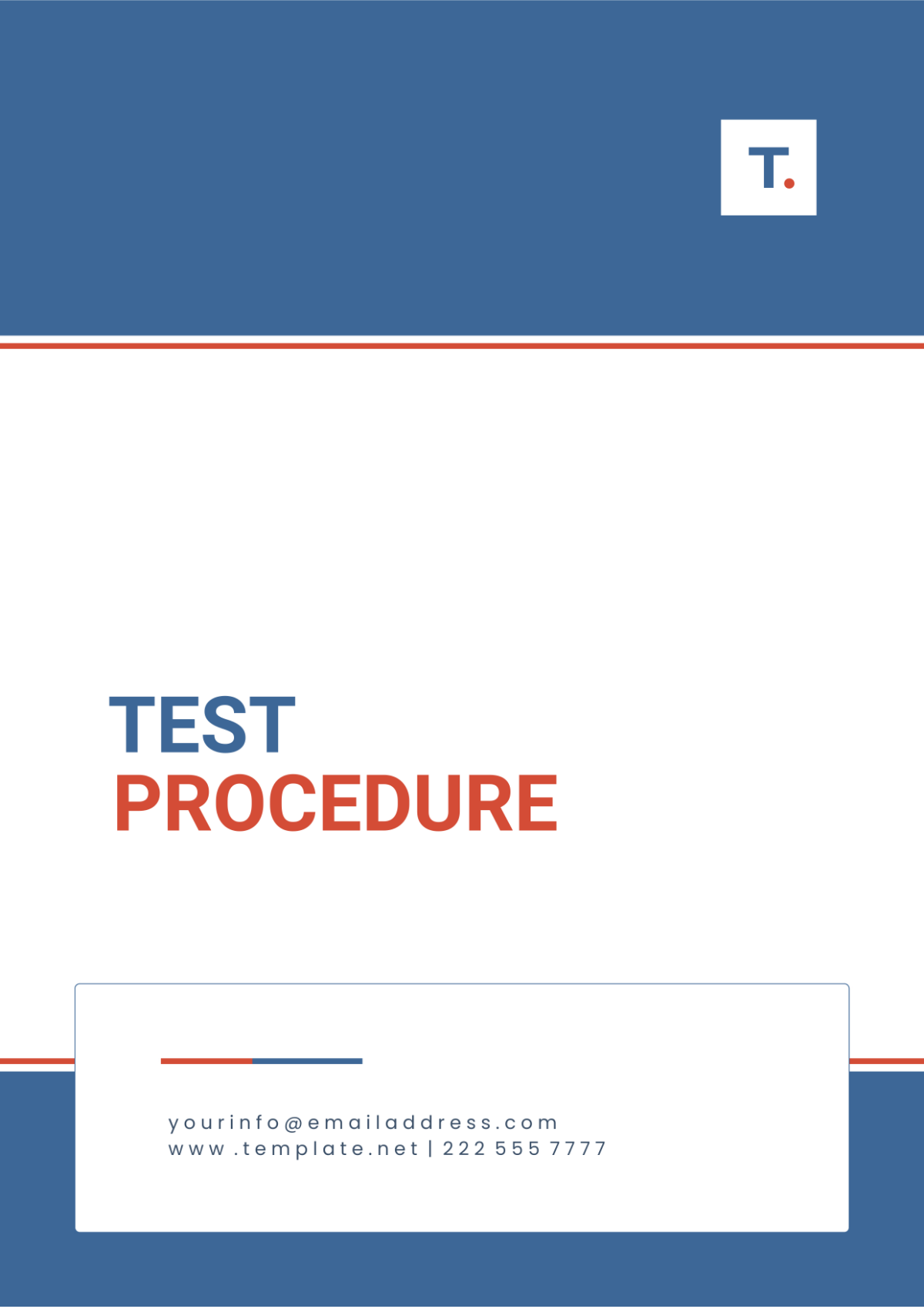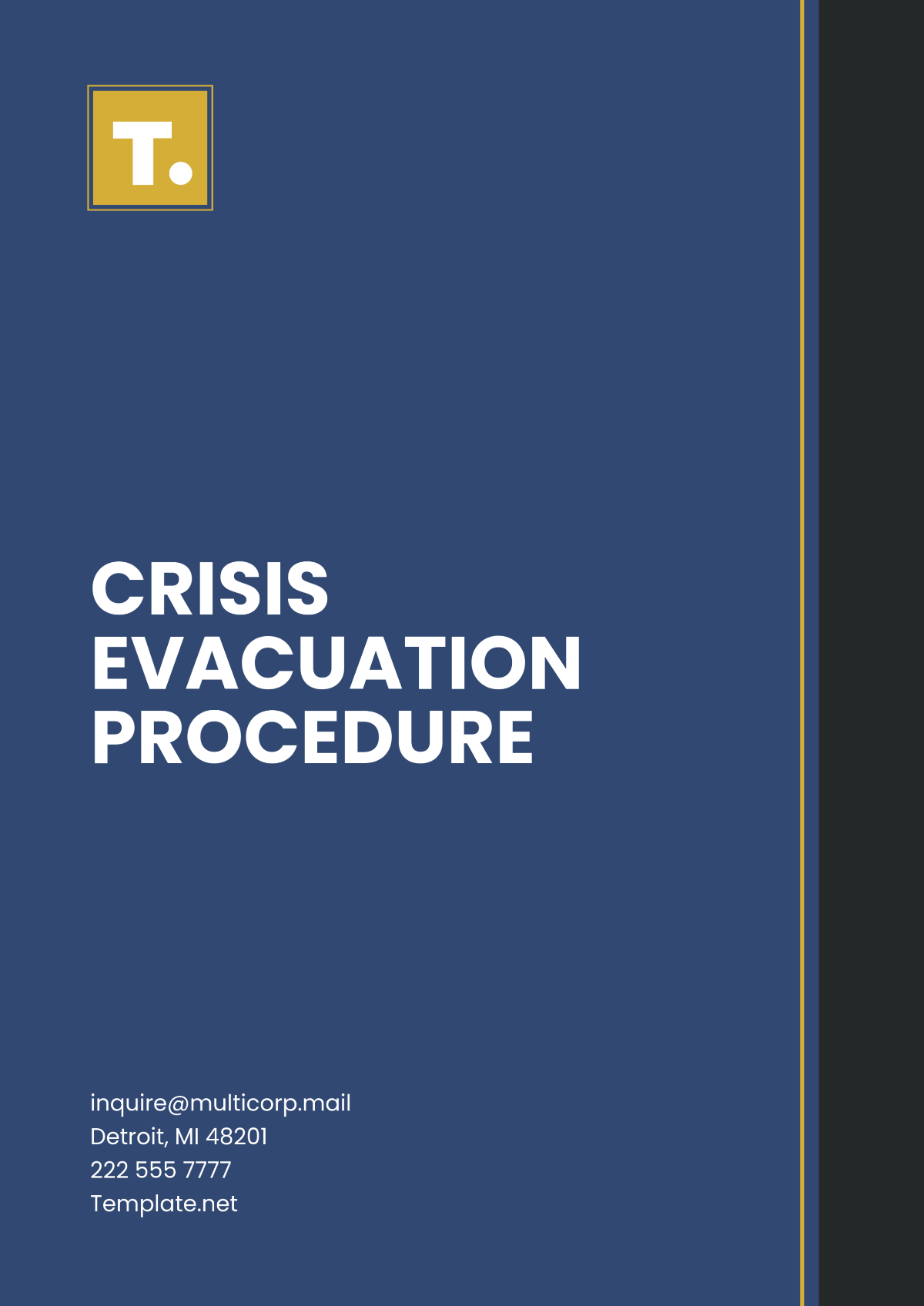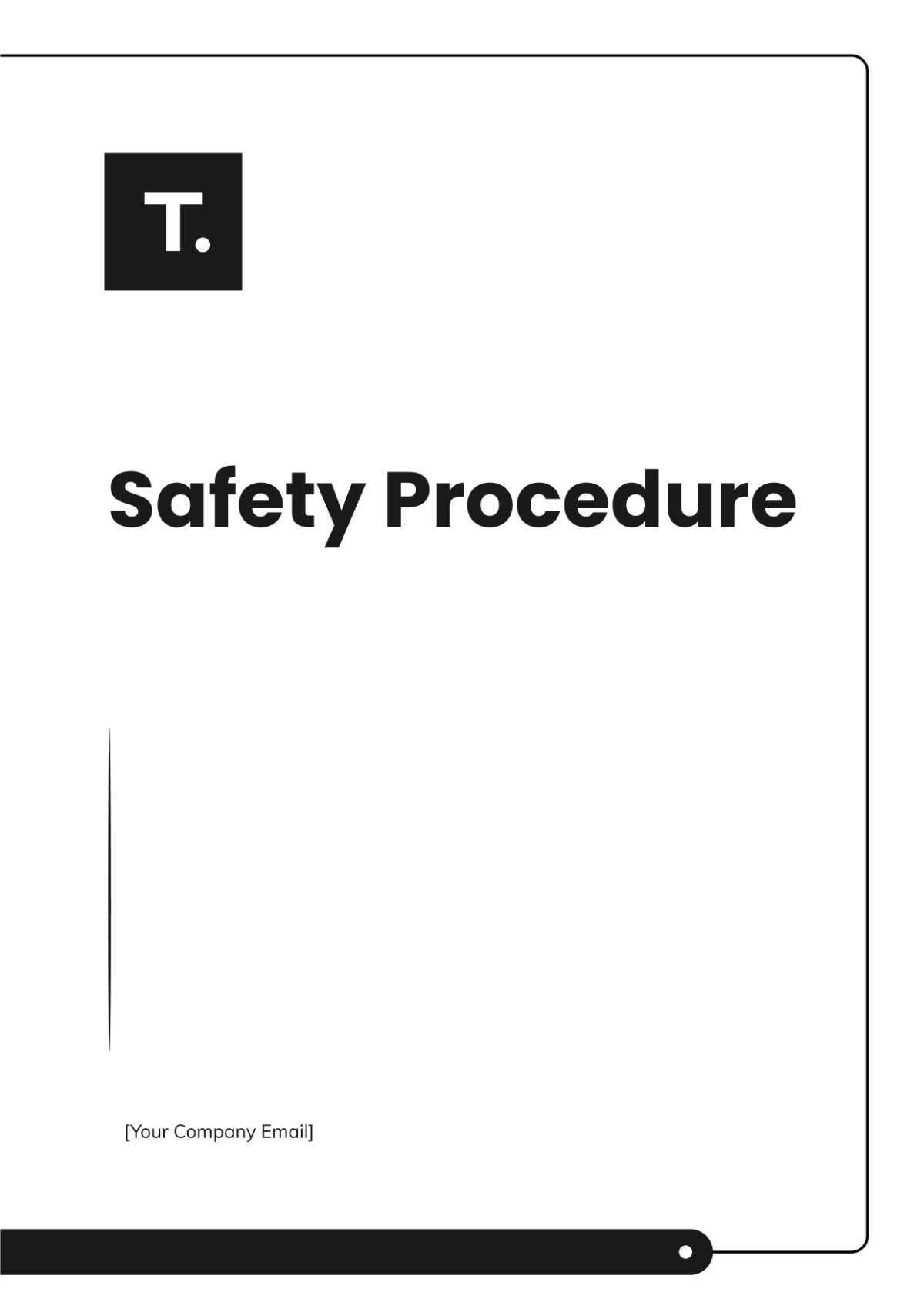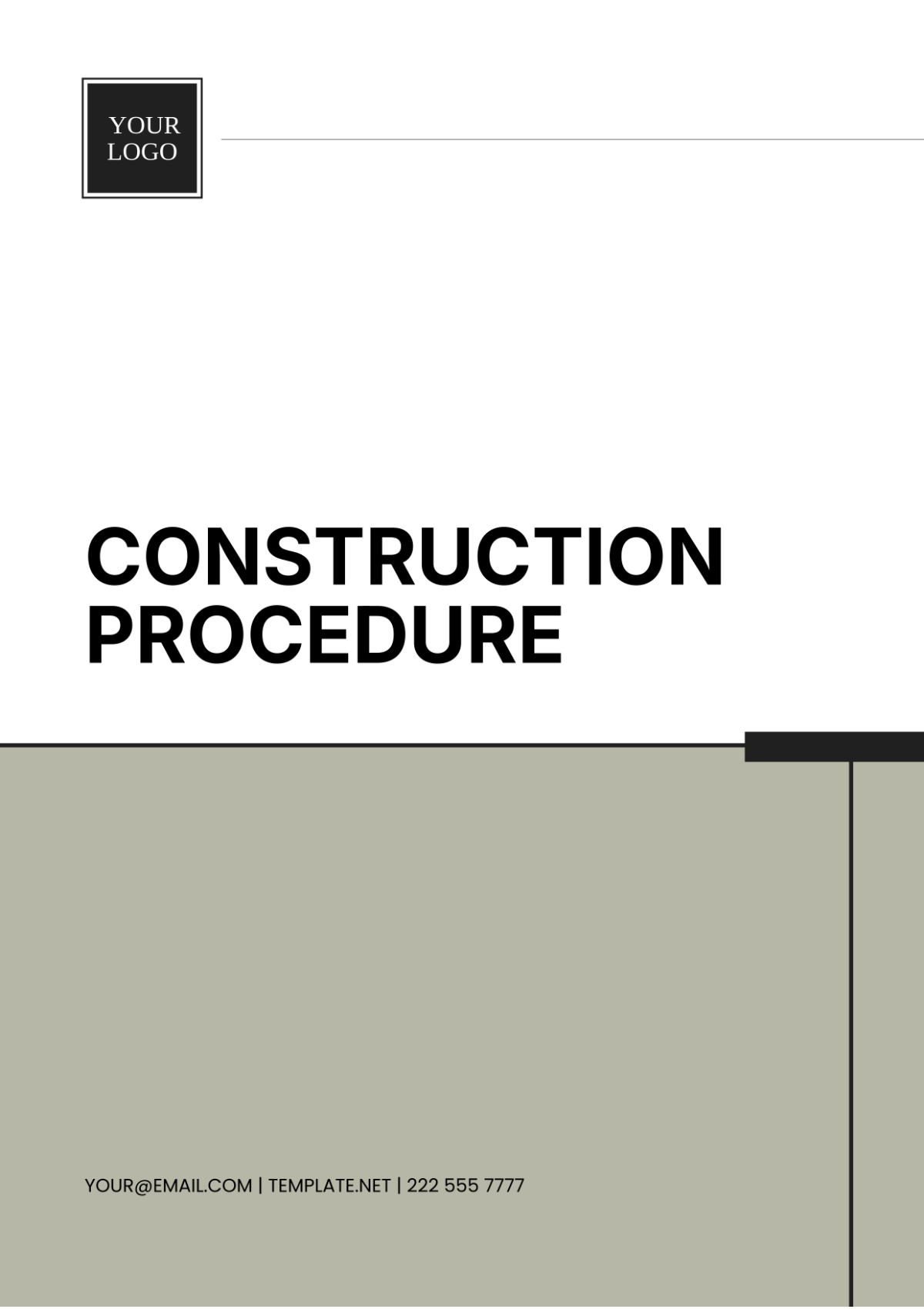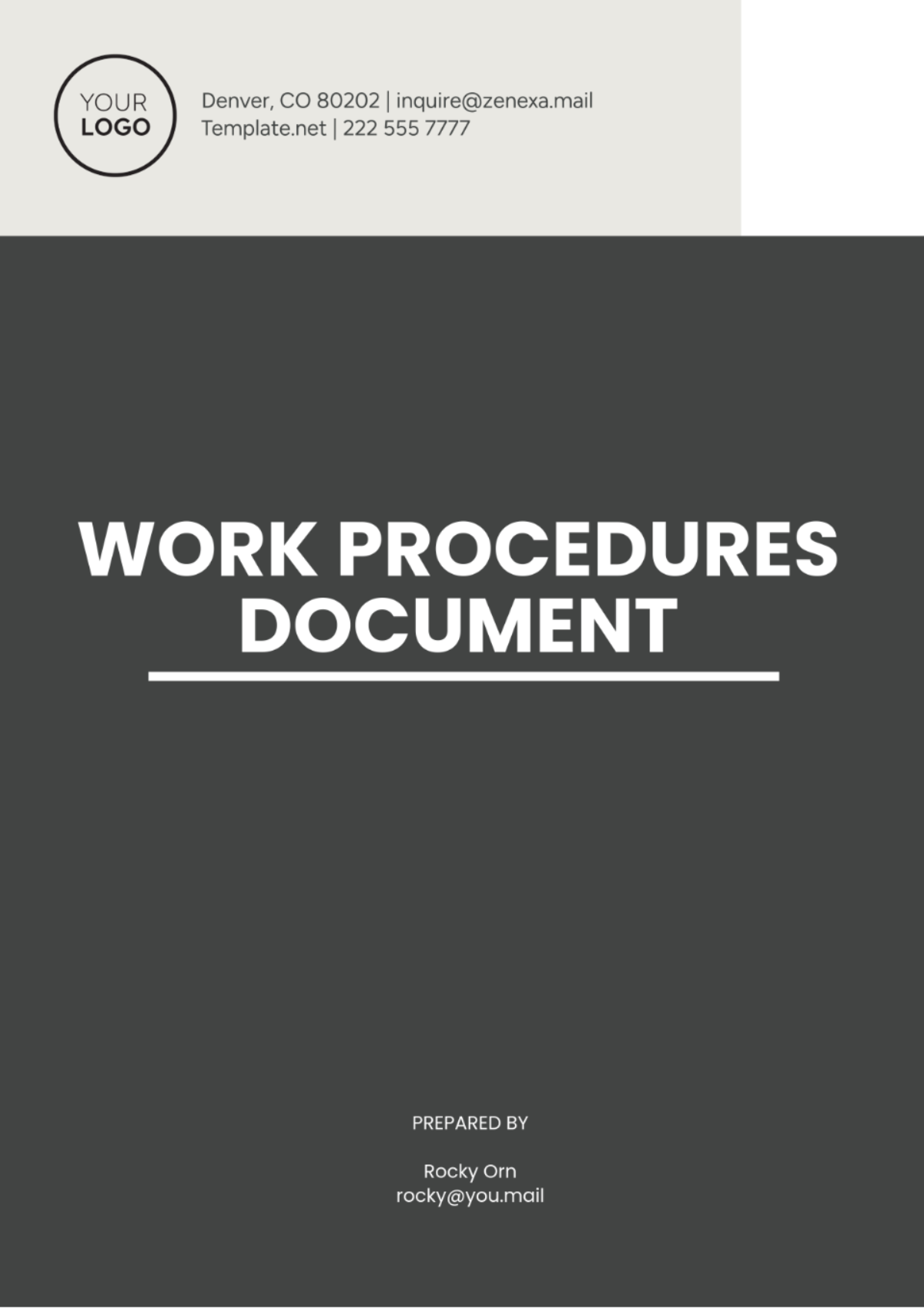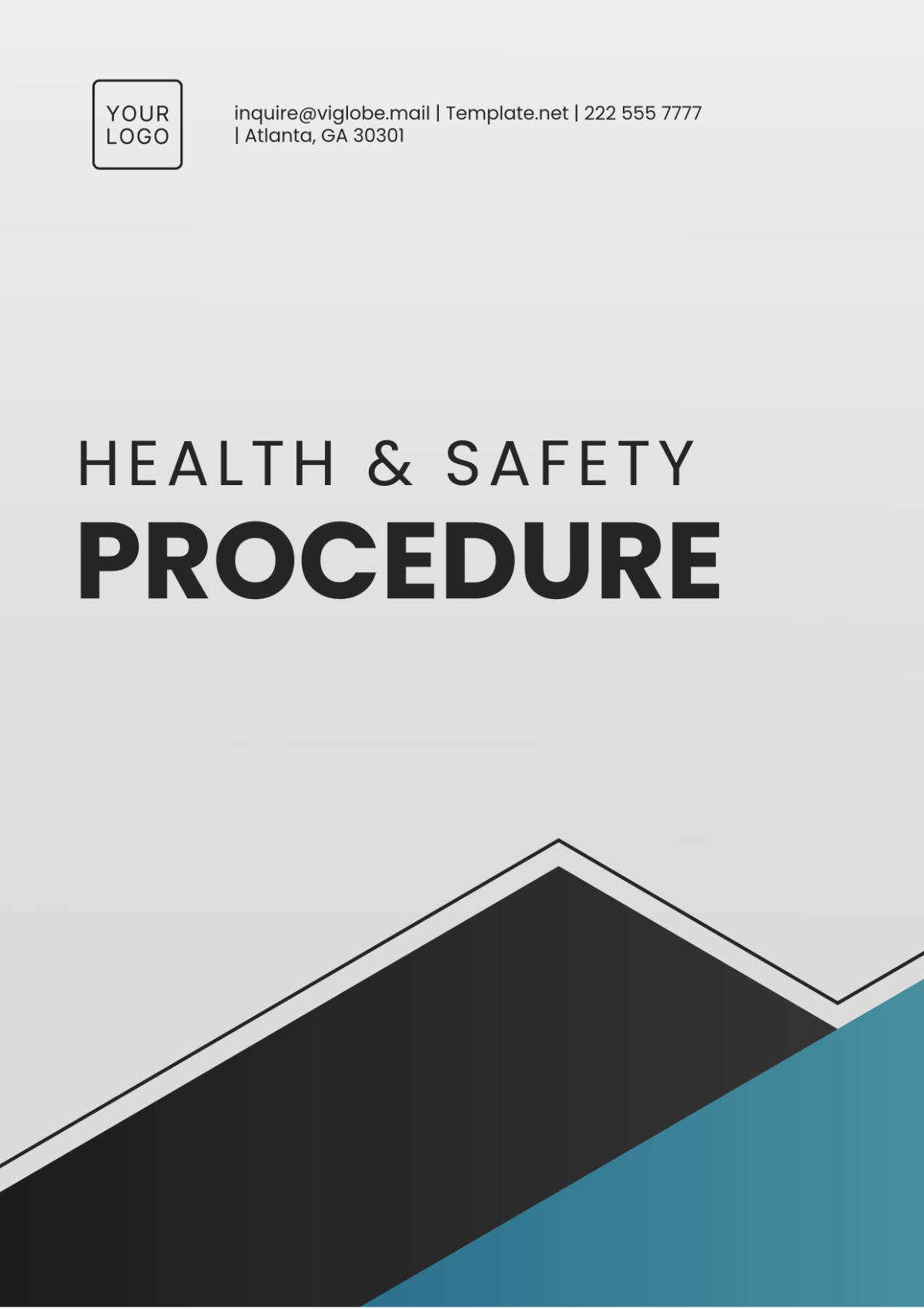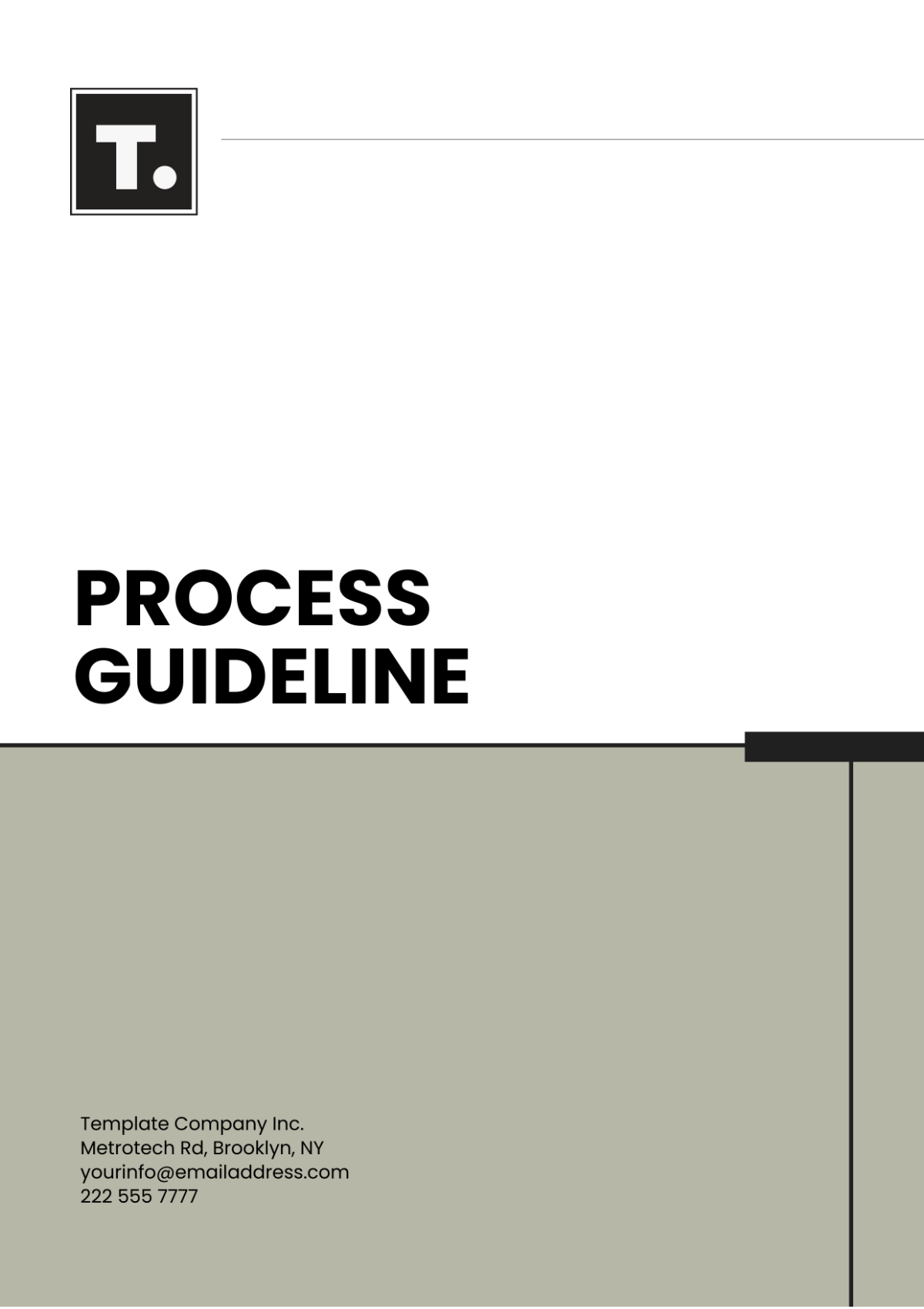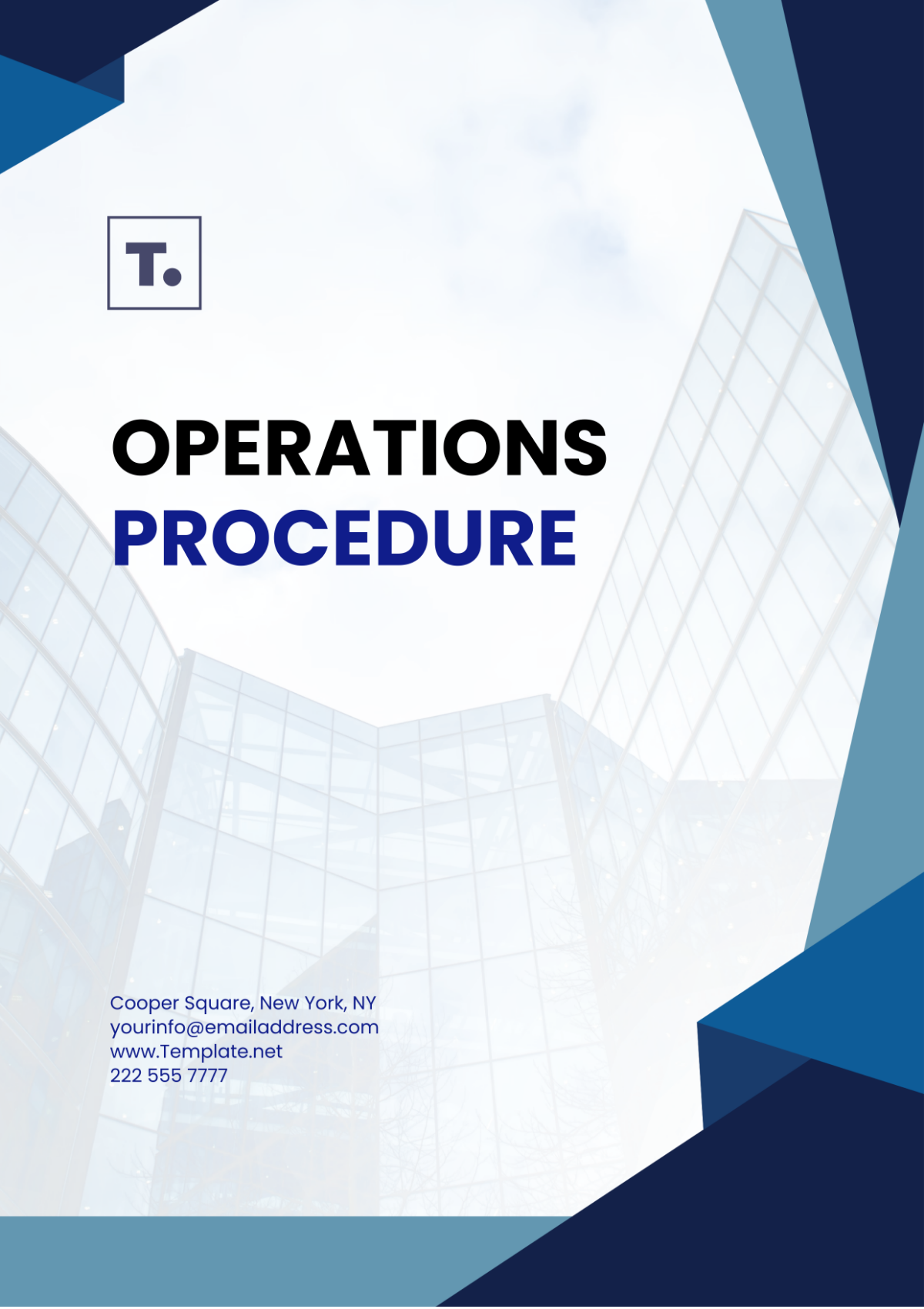EMERGENCY EVACUATION PROCEDURE
Purpose
The purpose of this Emergency Evacuation Procedure is to establish clear and effective guidelines for the safe evacuation of all employees and visitors in the event of an emergency or disaster within [Company Name] premises. This procedure aims to minimize the risk to lives and property.
Scope
This procedure applies to all employees, contractors, and visitors within [YourCompany Name] facilities, including [list specific locations or buildings].
Responsibilities
Emergency Response Team
Designate and train members of the Emergency Response Team (ERT) responsible for coordinating and executing evacuation procedures.
Ensure that ERT members are familiar with their roles and responsibilities.
Establish clear lines of communication within the ERT.
Employees
Familiarize themselves with the evacuation procedures outlined in this document.
Follow the instructions of ERT members and designated personnel during an evacuation.
Assist colleagues and visitors as needed, particularly those with special needs.
Emergency Notification
In the event of an emergency requiring evacuation, the following notification procedures will be followed:
Activation of fire alarms, evacuation alarms, or other appropriate alarm systems.
Contacting local emergency services (dial 911 or emergency number).
Utilizing intercom systems or communication tools to provide instructions.
Evacuation Routes
Primary evacuation routes are [list primary routes].
Secondary evacuation routes are [list secondary routes].
Evacuation routes will be clearly marked with illuminated exit signs and posted maps.
Ensure that evacuation routes remain unobstructed at all times.
Assembly Points
Designate assembly points at safe distances from buildings. Assembly points are [list assembly point locations].
Employees and visitors must proceed directly to the nearest assembly point after evacuating the building.
Assisting Vulnerable Individuals
Identify individuals with disabilities or special needs within the organization.
Assign trained personnel to provide assistance during evacuations.
Ensure that accessible evacuation routes are available for individuals with disabilities.
Emergency Equipment
Maintain readily accessible emergency equipment, including fire extinguishers, first aid kits, and emergency lighting.
Conduct regular inspections to ensure equipment is in working order.
Communication
Establish two-way radio communication between the ERT members and key personnel.
Maintain communication with local emergency services as needed.
Use public address systems and/or megaphones to provide clear and concise instructions.
Training and Drills
Conduct regular evacuation drills to familiarize employees and visitors with the procedures.
Review and evaluate the effectiveness of the procedures after each drill.
Provide training for all employees on emergency evacuation protocols.
Emergency Services Contact
The emergency services contact number for [Your Company Name] is [insert emergency contact number].
When contacting emergency services, provide clear information about the nature and location of the emergency.
Procedure Review and Updates
This Emergency Evacuation Procedure will be reviewed annually and updated as necessary.
Any changes to the procedure will be communicated to all employees.
General Outline of An Emergency Evacuation Procedure
Appendix A: Emergency Contact Information
Local Emergency Services
Nearest Hospital
Utility Contacts
Electric Company
Water Company
Approval and Acknowledgment
This Emergency Evacuation Procedure has been reviewed and approved by [Your Name], [Your Position], on April 9, 2053.
Acknowledgment of Receipt
I, [Employee Name], acknowledge that I have received, read, and understood the [Your Company Name] Emergency Evacuation Procedure. I will adhere to these guidelines in the event of an emergency.
Employee Signature: ____________________
Date: _______________

